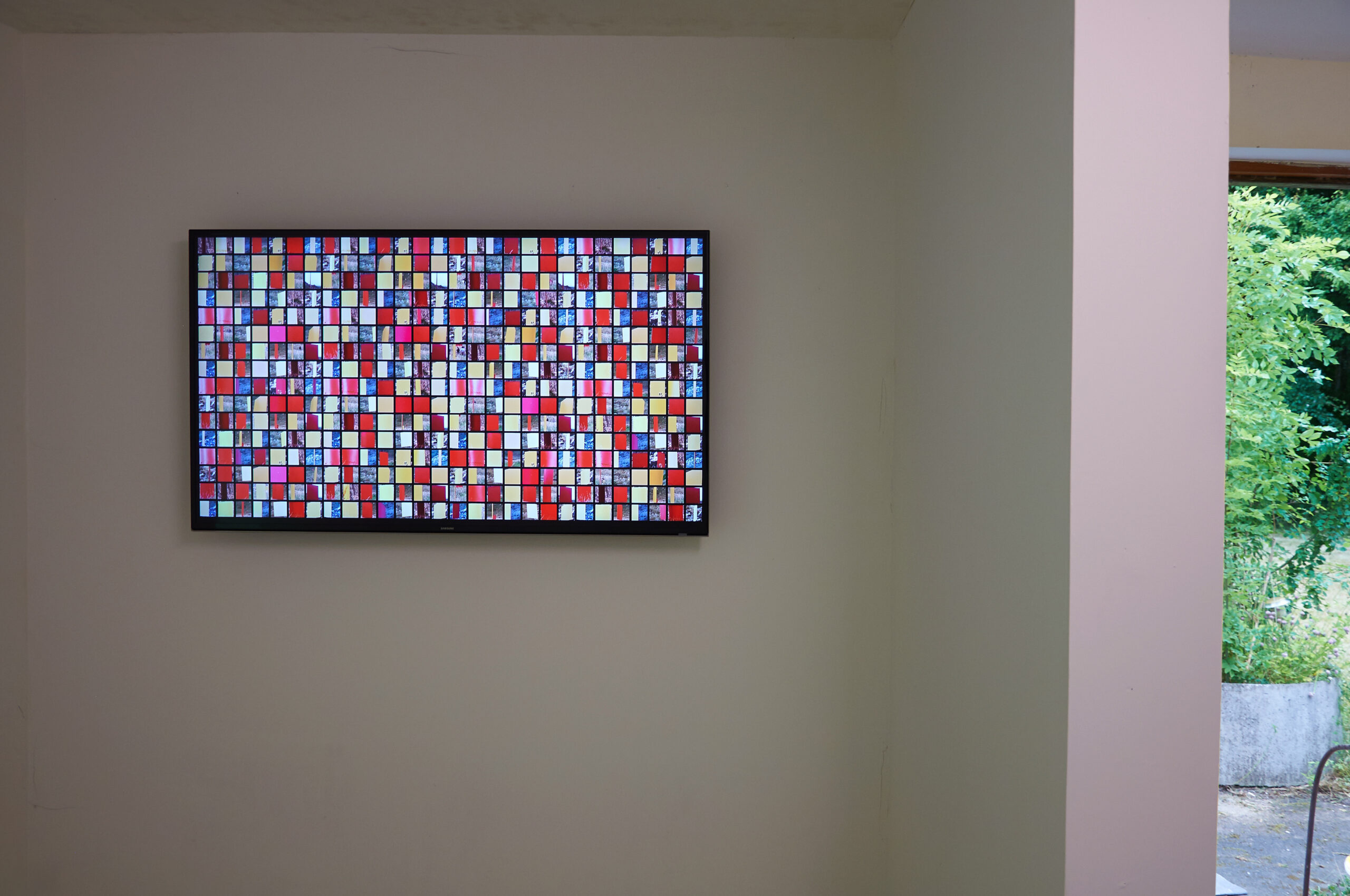Center for Klangkunst
“HAUSMUSIK: serial series”
-
Hans Peter Kuhn

Hausmusik: serial series is a collection of four audio-visual installations at the upcoming Henning Christiansen Archive at Kunsthal 44 Møen. The building is an old farmhouse which will be transformed in to the archive after this exhibition.
The term „Hausmusik” is from the 19th century German bourgeoisie, when the daughters of the upper class had to learn piano or violin. Those members of the family that were able to play an instrument assembled in the winter nights to make music together. But the girls also had to present their skills at parties or receptions that their now nouveau-riche parents gave. So the title is an ironical quotation, but the subtitle serial series indicate a non-narrative presentation.
The four works that are shown have in common their serial and minimalist approach. They all have repetitive parts and are all formally connected but have very different appearances, from video over sculpture to old-fashioned pre-digital slide projectors. And at least three of them have in common their relationship to sound. Although they have a strong visual aspect, it is the sound that creates the underlying narrative. Be it the busy distribution of short and hard percussives that mirrors human group behaviour in Population II, be it the silent sound piece Aus der Tiefe (Møn) that actually visualizes sounds beyond the human hearing range or the sound of good-old slide projectors in Klangfarben being conducted by the visual score they produce themselves. In the silent video Flags nature mimics the score for a contemporary piece of music.
The sources of Hans Peter Kuhn’s acoustic material are recordings of concrete sounds – natural sounds and the noises of everyday, or as in this case, the natural sounds themselves. Most of the sound material he uses in the process of composition is subject to electronic treatment. What the listener hears is incompatible with his/her reservoir of acoustic experiences. An idiosyncratic, impossible and purely virtual sound environment is established, which through its very artificiality bars any reception based on narrative structures. It means a musicalisation of sounds and draws the listener’s attention away from narrative references to structure.
“Precisely because Hans Peter Kuhn does not establish any artificial spaces through sound, the spatial aspect is central to his sound works. It is, on one hand, an important part of their musical disposition, and on the other, it is the link between auditory and visual reception. To see what one does not hear and to hear what one does not see is a defining characteristic of such art positioned, as it is, between musique concrète and intermedial experience.” Volker Straebel in “Hans Peter Kuhn – Licht und Klang” Heidelberg, 2000
HANS PETER KUHN
He exhibited his sound and light installations in many places worldwide including; Museum of FineArts, Boston; P.S.1 Museum, New York; Contemporary Arts Museum Houston; San Francisco Museum of Modern Art; Centre Pompidou, Paris; Akademie der Künste, Berlin; Artangel, London; Künstlerhaus Bethanien, Berlin and Sculpture in Eventyrhaven, 2005 in Odense. Since 1982 Kuhn has also created performance pieces that include sound as a main character, which he performed in many countries over the world. From 1978 to 1998 he collaborated with the American theatre artist Robert Wilson and composed music and sound environments for more then 30 productions in theatre, film and exhibitions. Kuhn is acknowledged for his compositions for modern ballet with works for the British dancer/ choreographer Laurie Booth. For several films he created the sound score and composed music. In collaboration with writers he created four Audio Art radio pieces. In 1985 Kuhn initiated a radio program for new music and audio art in Berlin which he hosted until 1990. Kuhn was guest professor at the Justus-Liebig University in Giessen (DE) in 1996. Together with Robert Wilson he received the Golden Lion of the Biennale Venice 1993 for the installation Memory Loss. He received a Bessie Award for the music for the 1989 dance production Suspect Terrain. Since 2012 he is professor for experimental sound at the Universität der Künste, Berlin. Born 1952 in Kiel (DE) and is living in Berlin (DE) and Amino/Kyoto (JP).
www.hanspeterkuhn.com
HAUSMUSIK is supported by BIKUBENFONDEN, Statens Kunstråd og Vordingborg Kommune.


